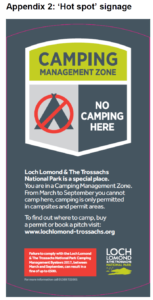 The Loch Lomond and Trossachs National Park Authority will, at its Board Meeting on Monday, consider an “Update Report” for Scottish Ministers on the operation of the camping byelaws in their first year. There is a cover paper (see here), the Report for Ministers (see here) and appendices (see here). The basic line the Park has taken is they are only providing an “operational update” and its too early to evaluate the byelaws:
The Loch Lomond and Trossachs National Park Authority will, at its Board Meeting on Monday, consider an “Update Report” for Scottish Ministers on the operation of the camping byelaws in their first year. There is a cover paper (see here), the Report for Ministers (see here) and appendices (see here). The basic line the Park has taken is they are only providing an “operational update” and its too early to evaluate the byelaws:

I disagree. It is not too early to clearly state what has been really happening and the Board has a duty to ensure that Scottish Minister are properly informed and are fully aware of the major flaws in the camping byelaws. This post considers the facts and issues which have been omitted from the report but starts with a critical look at some of the content, particularly that which casts new light on the people who have been affected.
The camping byelaws, east Loch Lomond and the West Highland Way
The report to Board Members starts with a lie and an attempt to re-write history:
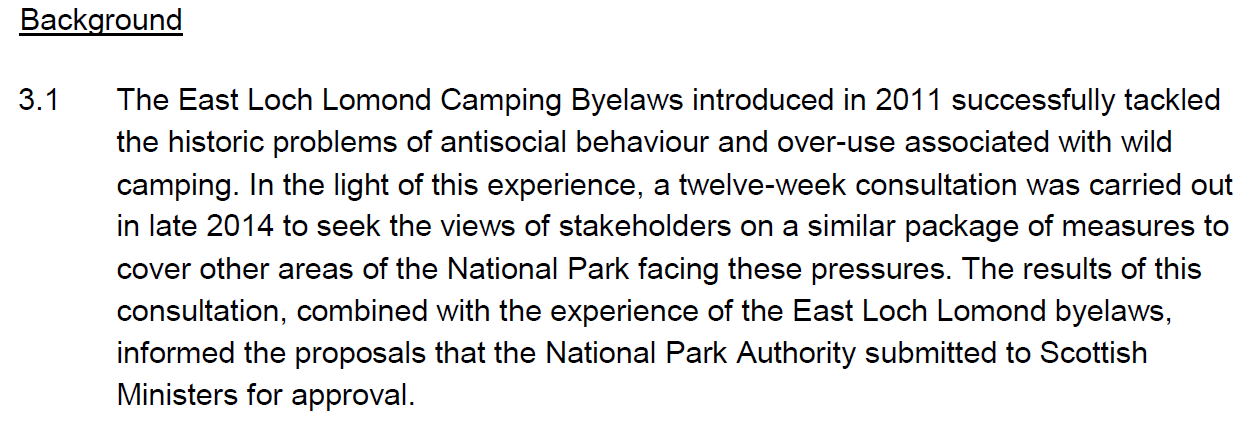
The lie is that the East Loch Lomond byelaws were introduced to tackle “over-use”: there is not a single mention of overuse in the Review of the east Loch Lomond byelaws submitted to Ministers in 2014 Review ELL byelaws. The reason is the ELL byelaws were introduced as part of a package of measures to tackle anti-social behaviour. These included the creation of a clearway between Balmaha and Rowardennan, byelaws banning alcohol and targetted policing and the byelaws were intended to be temporary. The LLTNPA has never produced any evidence to prove that it was the camping byelaws, rather than the other measures, which stopped people going for drinking parties on the eastern shore of Loch Lomond but, as soon as the clearway between Balmaha and Rowardennan made parking impossible, the parties became a thing of the past. The camping byelaws could have been safely revoked but instead the LLTNPA has redefined their purpose as being about controlling numbers who camp.
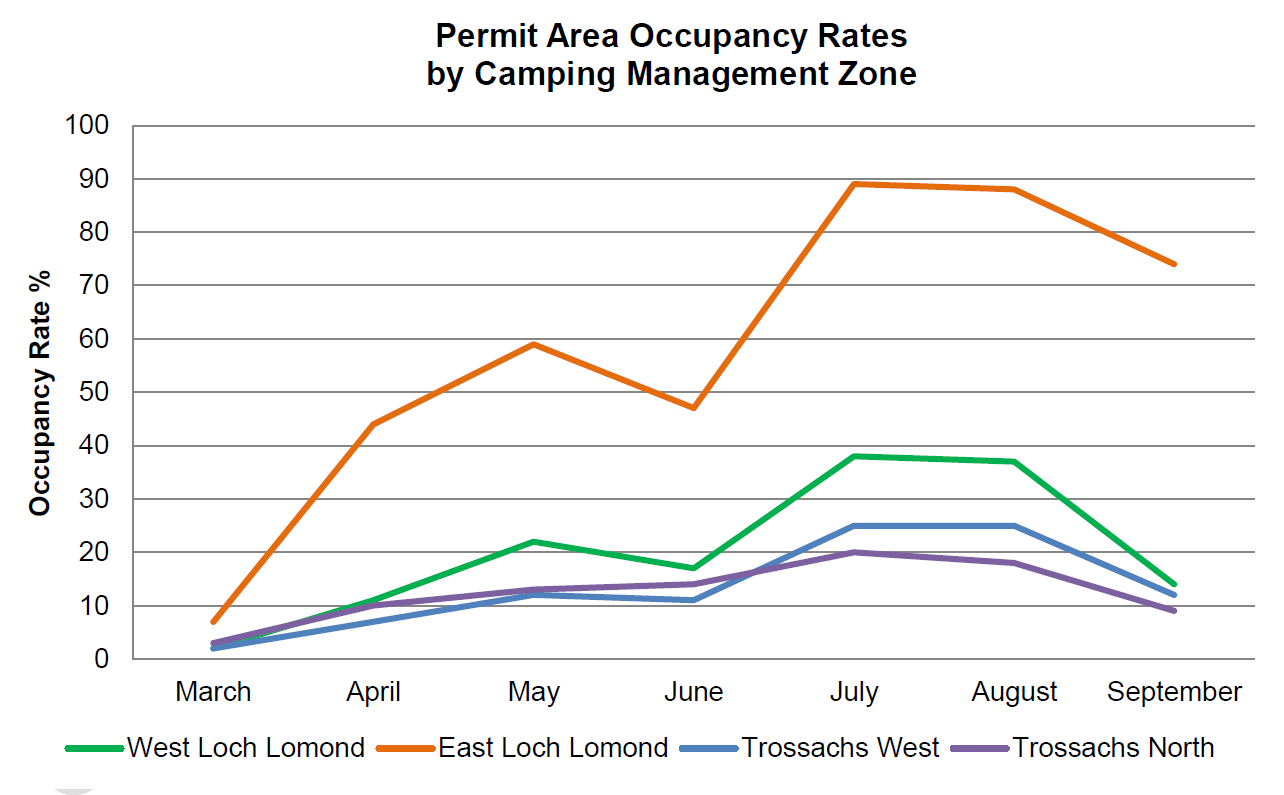
The Update Report shows that “occupancy” rates of the permit areas on east Loch Lomond are far far higher than elsewhere in the National Park. This is due of course to the West Highland Way, which attracts many backpackers each year, who, when they get past Drymen suddenly find their legal options for camping are severely restricted. WHW walkers never did any harm but, like other responsible campers, have been victimised by the byelaws and now have insufficient places to camp. The Board report brushes all this under the carpet and contains no plans to address the deficit in camping capacity or to ask WHW walkers what they think.
The camping byelaws and tourism
Fuller analysis of the permit data would, I suspect, show that many WHW walkers come from abroad. 16% or c1000 of the 6,129 permit booking were made by visitors from abroad and 24% by visitors from the rest of the UK.
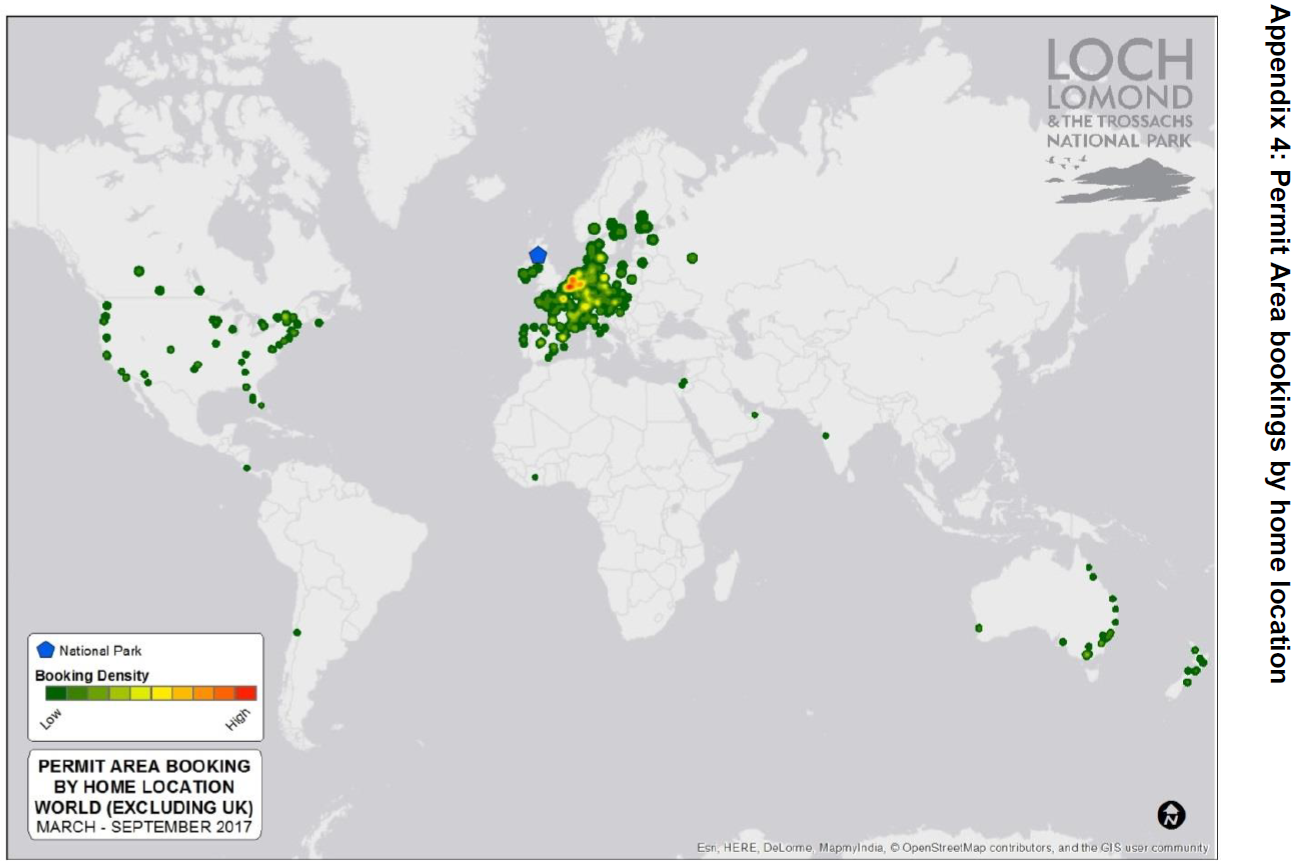
What the camping permit data provides evidence of for the first time is that a high proportion of people who want to camp on the loch shores are tourists. This has wide implications both about the message from the Park – “there are far too many campers” – which is disastrous for tourism, and for the provision of facilities. Instead of committing to Ministers to take a proper look at this, the Update Report does a body swerve and avoids the issues.
The camping byelaws and social exclusion
The most interesting data about permits, however, is about where people had come from in Scotland. Unsurprisingly, it shows most people come from the Glasgow conurbation, but also that:

This provides evidence, in the form of data, of what everyone with an interest in camping in the National Park has long known, that the majority of people who camp by the loch shores have lower than average incomes or, to put it another way, are working class folk from the West of Scotland. The implication is that when the LLTNPA claims the byelaws are needed to reduce the number of campers, it is in effect saying that too many working class people from the Clyde Conurbation have been coming out to the National Park to enjoy a night out under the stars. The LLTNPA has never looked at alternative provision for poorer people and as a result the byelaws are deeply discriminatory and socially exclusive. We should now be able to work out the extent of that adverse impact.
The inclusion of this data was at the suggestion of the stakeholder forum and while I am delighted the Park has done the analysis in this case, it should have been far more such work and reporting to the Scottish Government on the implications. In my view, there is now sufficient evidence for Ministers to consider an independent Equality Impact Assessment into the effect and operation of the camping byelaws.
Omissions from the Update Report to Ministers
The report contains the usual parkspin and speak (one of the co-authors is head of marketing) and glosses over all the difficulties of the first season of the camping byelaws. This is best illustrated by what has been omitted from the Report.
1). Number of campers affected
There is no data provided or comparison made between numbers camping in the areas covered by the camping management zones before the byelaws came into effect and subsequently. The LLTNPA has lots of data on this but has failed to provide it or to undertake any analysis despite its senior staff now consistently claiming that the purpose of the byelaws is to reduce the number of campers. What is it that the LLTNPA senior staff do not want the Minister or the public to know about something it claims is so fundamental?
My suspicion is that in part this is because this data would show that the byelaws have impacted most on poorer people and their ability to enjoy the outdoors, with all the benefits that has for physical health and mental well-being, but I suspect it would open other cans of worms.
2) Numbers camping or campervanning with a permit
There has been no attempt to compare the number of people who have applied for permits, and thus are camping lawfully, with those who have not. Anyone who has visited the management zones will know that considerable numbers of people have continued to camp outwith permit area and the enforcement statistics give some indication of the scale: 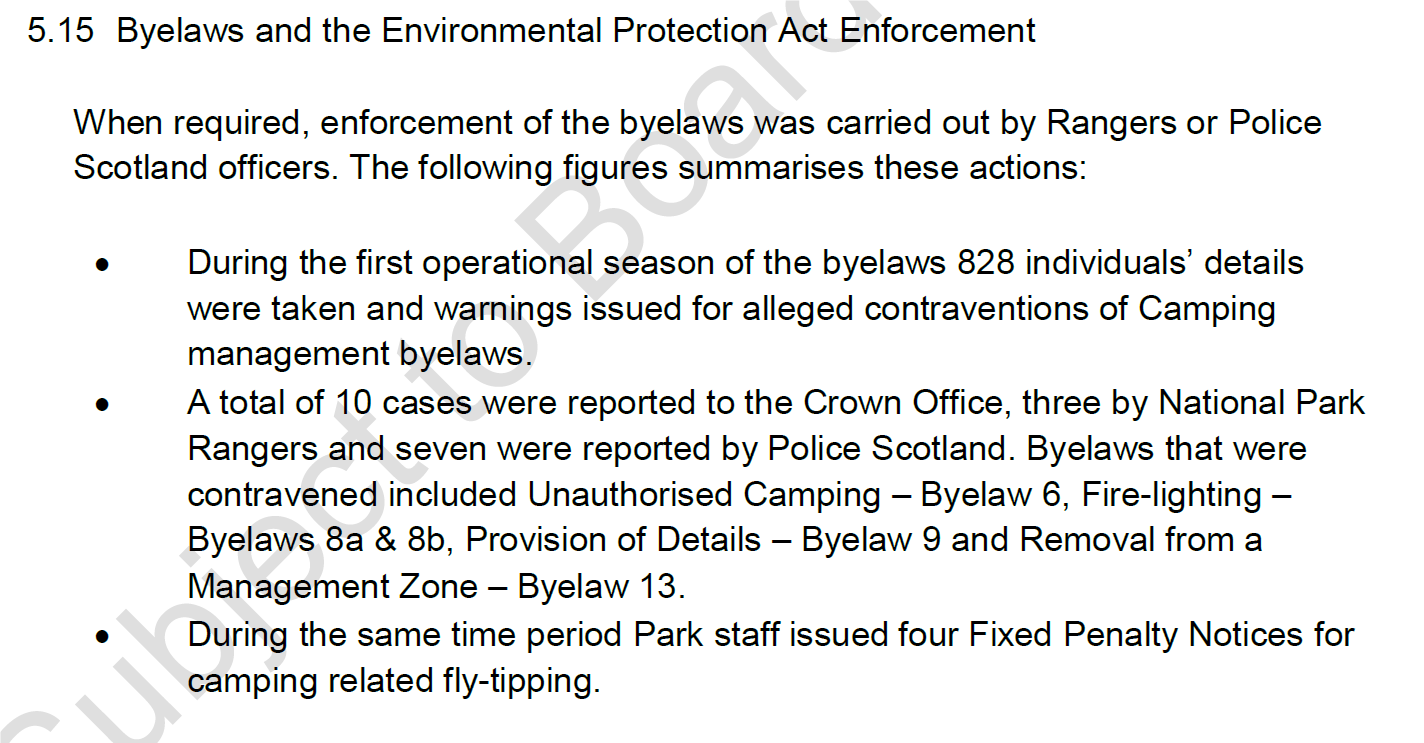 The 828 people given warnings are likely to be mostly campers because the byelaws were never enforced against caravans and were found to be unenforceable against campervans. This number excludes campers whose names were not taken by Rangers – one can assume the more sensible Rangers just asked people to move on without taking personal details – and those who were never caught. We also know that despite the intensive Ranger Patrols less than half of people who camped with permits saw a Ranger:
The 828 people given warnings are likely to be mostly campers because the byelaws were never enforced against caravans and were found to be unenforceable against campervans. This number excludes campers whose names were not taken by Rangers – one can assume the more sensible Rangers just asked people to move on without taking personal details – and those who were never caught. We also know that despite the intensive Ranger Patrols less than half of people who camped with permits saw a Ranger:
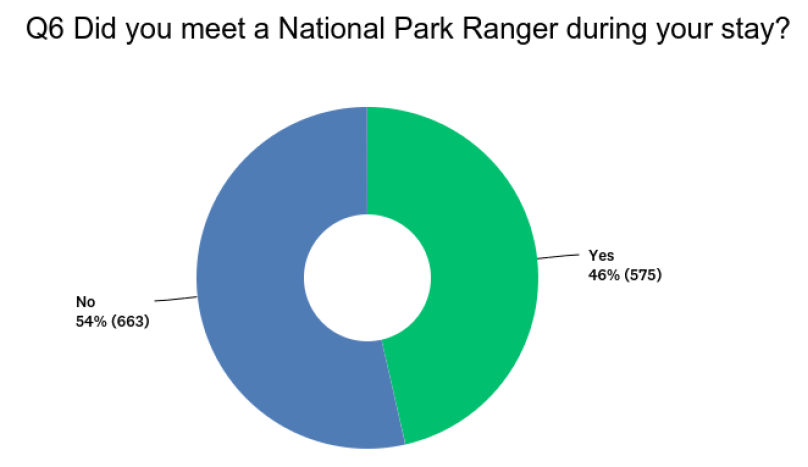
Applying these considerations to the data, suggests that a reasonable estimate of the minimum number of tents pitched without a permit would be over 2000 (compared to 4914 that had permits) and the total may have been very much more. A clear estimate of the people unaware or ignoring the byelaws is fundamental to any evaluation of their effectiveness and a clear methodology for doing this should have been presented to the Board now: it cannot wait till three years time.
3) Cost Benefit Analysis
The Report fails to say anything about the costs of implementing and enforcing the byelaws despite some of this information being available in the financial reports which will also be presented to the Board on Monday. The LLTNPA has never done a cost benefit analysis and more specifically whether instead of devoting resources to policing campers it might not be more effective to provide basic infrastructure and facilities.
4) The implications of holding personal data
The LLTNPA now holds personal data on the 828 people it warned for breaching the byelaws but has said nothing about what they are doing with this data (e.g are they sharing it with the police for enforcement processes) or the civil liberty implications (how long are personal details kept on the list and for what purposes). The Board should have considered this – and I have previously criticised them for their failure to do so – when they were considering enforcement procedures for the camping bye-laws.
5) Enforcement and campervans
The only mention the Report makes of the effective collapse of the byelaws in respect of campervans is this:

Part of the justification for the camping byelaws was to control the numbers of campervans which the LLTNPA claimed were swamping the National Park and encampments of caravans which blocked laybys for months and were a major concern to local communities. However, all this unravelled in part because Park staff, without approval from either Board or Minister, changed the wording of the byelaws so private roads were included in the exemption which allowed motor vehicles to stop off overnight. This in effect allowed caravans and campervans to stop off overnight anywhere on the roadsides in camping management zones and totally undermined the byelaws. The Update Report is silent on this fiasco and fails to discuss the implications which includes the fact it cannot legally charge campervans to stop on roads. That is why its only commitment in respect of motorhomes is worded as follows:
 6) Outcome of Enforcement
6) Outcome of Enforcement
The report is silent about what has happened in the 10 cases referred to the Procurator Fiscal. The outcome of those cases is likely to say something about the fairness and enforceability of the byelaws, which is again something which should be reported to Ministers.
7) Permit feedback and Complaints
Following my post (see here) questioning the positive feedback the LLTNPA had claimed to receive about the permit system, I requested the data behind that and also on complaints made about the byelaws. Neither are included in the Update Report – I am due to receive that information this week, under FOI, too late to analyse before the Board Meeting. Since my original post though two complaints, which the Park had failed to answer, have been featured on parkswatch (see here) and there is a question about how many more complaints have been made received but not recorded.
There is a wider issue about how the LLTNPA records other criticisms. The feedback I have had is the November stakeholder meeting on the camping byelaws was poorly attended. The reason I believe is that attending such events i pointless as long as staff continue to cover-up anything that contradicts their narrative that the byelaws have been well received.
8) Impact on organised groups
The Update Report says 12 exceptions were granted to groups to camp outwith permits areas (for Duke of Edinburgh expeditions etc) but no comparison is made with the numbers of organised groups previously camping in these areas. If the LLTNPA asked the Scouts, DofE etc,I believe they would find that their bureaucracy has driven people away and hard-pressed teachers etc simply don’t have time to go through the process, which incidentally destroys any flexibility to change plans according to weather conditions etc. These groups have been driven out of the National Park.
9) Camping provision
In order to allow the byelaws to go ahead, the LLTNPA committed to Ministers to provide 300 new camping places (although the 300 included the existing campsites at Sallochy and Loch Lubnaig). The Update Report is written in a way to suggest that that commitment was met:

While I am still awaiting the data behind this claim, having 300 places available online is not the same as 300 places being available on the ground. Regular readers will know that some of the camping permit areas are uncampable (and some since abandoned) and others have been unusable at times (for example when under water). There are strong reasons to doubt therefore that the Park’s commitment has been met in practice. There is evidence for this in the Report:

That additional places are being recommended because at times existing places have been unusable confirms there has been a shortfall, while:

confirms that some of the permit areas on Forest Drive were unusable. The Update Paper avoids an open discussion of the implications of this and whether the LLTNPA really did meet its commitment. I am pretty certain the answer is “no”. More importantly, however, looking forward the LLTNPA promised to Ministers to increase the number of places it provided after the first year. The Report contains NO evaluation of how many such places might be required or sustainable and the only commitment the LLTNPA has made to improved camping provision is the 15 place new campsite at Loch Achray.
There is no update on plans for other which might help reduce the impact of not just campers but all visitors whether this is provision of litter bins, toilets or chemical disposal points. In effect the Update Report suggests the LLTNPA’s Camping Development Strategy has collapsed.
What needs to happen
Leading on from the first two bullets in para 7.3 quoted above, the Update Report lists the following further areas for “improvement”:
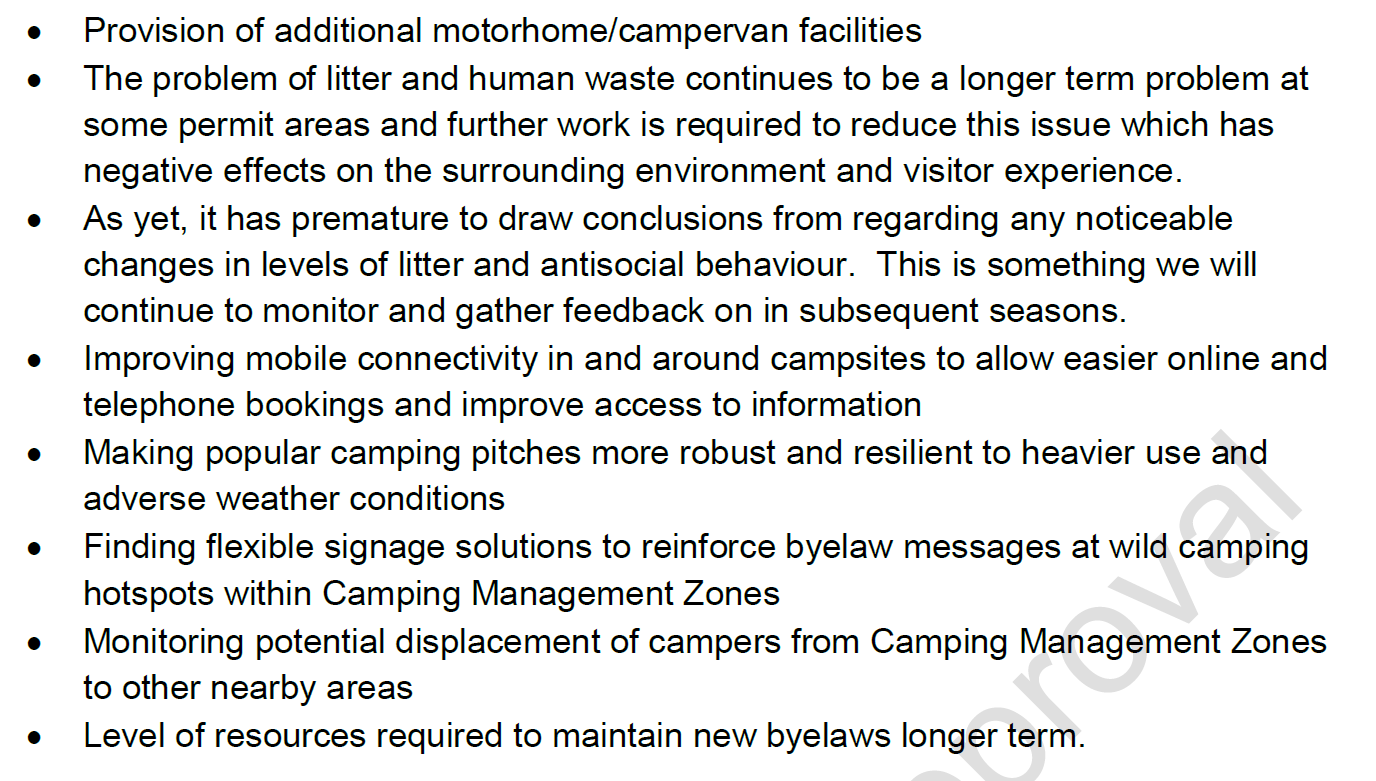
These areas clearly link to some of the issues raised in this post but which are not being properly reported to Ministers. The lack of any firm commitments is not in my view accidental.
I would love to think the LLTNPA Board on Monday would send the Senior Management Team back to work on the issues raised here and come up with a concrete set of proposals for Ministers, but I suspect that won’t happen. To do so would require the Board to admit to Ministers the flaws in the byelaws and that the previous Board might have got it badly wrong.
Part of what might be needed therefore is an alternative report to Ministers about the efficacy and implications of the byelaws. This would be based on data and other evidence missing from the LLTNPA report and should make recommendations as to what should happen.
More important than this however is that politicians, particularly in the west of Scotland, need to start speaking out for their constituents and to criticise the failure of the National Park to fulfil its statutory objective to promote public enjoyment of the outdoors. The discriminatory impact of the camping byelaws on poorer people, with all the consequences that has for their physical health and mental well-being, should be a political issue. Whlle the Scottish Government claims it is trying to reduce health and educational inequalities, it has allowed to LLTNPA to devote considerable resources to achieving the opposite. That needs to stop and the National Park needs to change course and do what it was set up to do, which was to enable people to enjoy the great outdoors on their doorstep.

I had almost forgotten about all this utter nonsense went away on november 5th still lots of campers fireworks not a ticket inspector warden police bookburner all night was great night felt totally relaxed when i got home the way it always was. these laws have made something free and uncomplicated into nothing short of an embarassing discrimination,waste of money, resources ,time the list could go on. time for more letters to government me thinks
Is “occupancy” based on purchase of permits? Is so, then the report is completely bogus. Quite often in my experience permits are purchased and never used. There is no mechamism to cancel/refund them and they’re cheap to obtain – so they’re clearly purchased on the off chance. I’ve turned up more than once when the permit web site is reporting no more motorhome permits available to discover areas are empty.
And of course this method of permit management means that the number of spaces is even more limited as so many are wasted. Supporting your comments – most motorhome and campervan owners I encounter in the permit areas are foreign tourists.
This is a very good point which I had not considered and the answer is almost certainly yes. Besides the unfairness it means the proportion of people actually camping or campervanning without permits compared to those who do have permits will be even higher than I suggested. After the post was published, I received a response from the LLTNPA to an Information Request for all data they have relating to the camping byelaws. While they have provided some heavily redacted data on permits (all comments removed) they have refused to provide their Ranger Patrol records which might have indicated how many tents and campervans were recorded outwith permit areas (they had previously provided me with patrol records in 2015 and clearly don’t want the information in the public realm). I will ask for a Review and then appeal if necessary to the Information Commissioner.